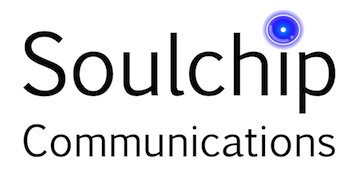I receive regular mail outs from various disability groups, and this particular event was particularly interesting to me – professionally and personally.
To make the acronym clear, the Accessibility Information Standard (AIS) has been steadily pushed through the NHS for the past year as a means for patients to have information provided in an appropriate format if identified and flagged. How these two actions would be accomplished was brought up in discussion, and how this is recorded/actioned in a patient record remains to be seen.
I’m also part of Lewisham CCG PRG. This is the beginning of the problem in many respects, as the National Health Service loves its acronyms. To repeat with real clarity, I’m part of a Lewisham Clinical Commissioning Group Patient Reference Group. A lot of words, hey? The CCG is in charge of contracting primary care services in Lewisham, which includes mental health services and Lewisham hospital. The PRG is meant to be a ‘critical friend’ as part of the organisational move to have more public participation. Felt that it was useful to mention this.
The AIS is meant to be an inclusive move which would be able to engage patients in more meaningful interactions, and hopefully reduce the DNA (Did Not Attend) rates. The day was organised by AbilityNet and sponsored by Panlogic – providing a very nice lunch. Hosted in the British Computer Society’s really interesting building just off the Strand in London, it was a suitable venue for a series of discussions dominated by all things digital, even in the hashtag #AISdigital.
Apologies for no images in this post, took not one photograph of the impressive interior. It was a stunning combination of cleaned up Edwardian stone frontage and modern glass/aluminium walls and doors. I also felt that that there was an unspoken respect for privacy, and this is very important especially when there were a number of visually impaired people attending. Its rude and inappropriate taking photographs of people that can’t seeing you doing it, more so if you don’t manage to speak with them.
The day started very early. I was so early none of the speakers had even arrived. Ah well, it was time for coffee and email for a while. When the event did start their was the inevitable presentation, thankfully there was not to be a stream of talking heads informing, proposing and generally delivering information.
An interesting theme throughout the breakout discussions I was party to, was the slightly disruptive (yet very interesting) voice of a GDS (Government Digital Service) developer, working in the area of ‘assistive digital’, a truly absorbing term. He was interested in how existing paper materials were used, which also interests me too. The rationale was simple – there will never be a 100% digitally included population if ever, and as such the existing access points for people not able or willing to join in on the push for a ‘digital default’ should be allowed their rights as a citizen too.
We split into three groups, rotating across the three discussion topics:
- What role can digital technology play in enabling disabled patients to access information in the NHS?
- In what ways should the Accessible Information Standard reflect the role of digital technology in enabling patient communications?
- Understanding digital accessibility
It seemed that as Panlogic were paying for the tasty lunch, much of the conversation stayed in the arena of digital accessibility and websites; it was raised by some that an app-based approach was much more practical than trying to get websites to be more useful. This idea had a lot of value, as direct communication channels across the NHS could be opened up with an app that would just present NHS tweets for example. Having an app for your prescription is of great use for many – as long as it as accessible and not just on one platform. Other interesting morsels of accessibility information came to light too, such as that websites created for people with a screen reader would be unable to navigate a page created for an audience with learning difficulties. I thought that there was a lack in discussion about the tools available too, such as the fantastic Webbie, which would help with many sites not optimised for a screen reader.
There was also a sense from some discussions that there are systemic issues in the NHS that causes many difficulties for a standard to be taken on nationally – how many people realise that their GP is a business, and that Nye Bevin had to ‘stuff the doctor’s mouths with gold’ for them to join in the building of the NHS? The National Health Service is a collection of many smaller parts, all with their own priorities.
In the panel discussion at the end of the day, there were moments of tension, maybe a militancy? ‘Kicking bottom’ was the phrase used as an approach to getting patients engaged in the use of the AIS for their health care services. It was certainly heartening, as understanding a legal requirement and being able to call upon a single standard to enforce it would be more than useful. I’m going to be much more vocal about any accessibility issues in my future meetings in Lewisham.
